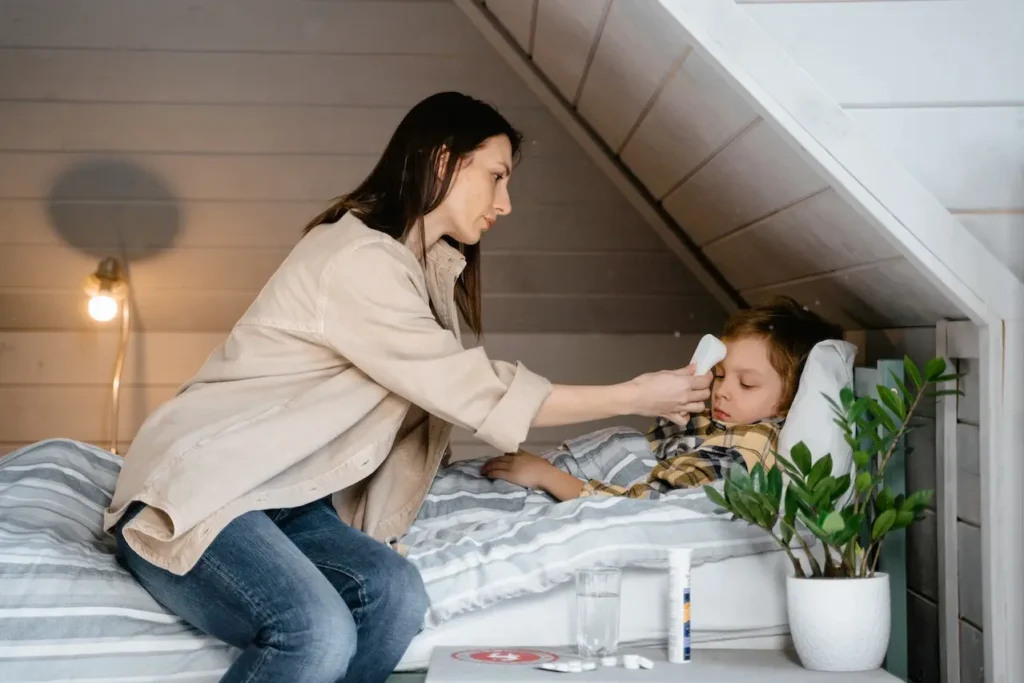
Last Updated On: August 30, 2024
Because of the chickenpox vaccine, chickenpox (varicella) is much less common in the United States than it once was. However, if someone gets chickenpox, the infection and rash that it causes go away on their own. Chickenpox is communicable and can easily transmit from person to person. A child infected with the virus should remain at home until the rash has completely crusted.
Preparing yourself to handle a medical emergency by learning first aid is the best thing to do as a parent. You can learn first aid through the First Aid certification course offered by the American CPR Care Association. Our First Aid program is meant to provide parents with fundamental First Aid skills that will enable them to act wisely in an emergency. First aid for chickenpox doesn’t involve heavy medication.
The classic chickenpox rash can be identified by paying attention to the changes on the skin. It begins with a rash of small red bumps that resemble pimples or insect bites. They appear in waves over 2 to 4 days, then develop into fluid-filled thin-walled blisters. The blister walls rupture and expose open sores. These sores eventually crust over to form dry, brown scabs. As mentioned, chickenpox rash appears in waves, therefore all three stages (red bumps, blisters, and scabs) of the rash appear on the body at the same time.
The chickenpox rash usually appears on the stomach, back, or face. Then it spreads to almost every other part of the body, including the scalp, mouth, arms, legs, and genitals.
Symptoms in kids can vary. They can have:
In the case of mild chickenpox, the treatment typically doesn’t go beyond resting and managing the symptoms. In some cases, antihistamines are prescribed by doctors to lessen itching. Medicines to treat skin infections are occasionally needed.
If the symptoms prolong then consult a doctor and get medical care. Reach out for medical care for your child if:
For the first several days, apply cool wet compresses or take mild showers every 3–4 hours. Drugstores and supermarkets both carry oatmeal bath solutions that can help with itching relief. The rash does not spread during baths.
Chickenpox is a highly contagious viral infection. It is mostly known for causing a blister-like rash that appears all over the body. The rash is usually accompanied by a fever, body aches, and fatigue.
Chickenpox spreads through the air when an infected person sneezes, coughs, or talks, and the virus is then inhaled by others. The virus can also be spread through direct contact with the fluid from the blisters or by touching a surface contaminated with the virus and then touching the mouth, nose, or eyes.
Once a person has had chickenpox, they are generally immune to it for life, but the virus can remain dormant in the body and later reactivate as shingles.
The symptoms usually appear 10-21 days after exposure to the virus. The symptoms of chickenpox include:
Chickenpox is usually a self-limiting illness and treatment is generally supportive. Over-the-counter pain medications such as acetaminophen or ibuprofen can help with pain and fever, and oatmeal baths may soothe itchy skin. Bed rest and fluid intake are important for recovery.
There is a vaccine available to prevent chickenpox. It is called the varicella vaccine and is given in two doses, typically the first at 12 to 15 months of age and the second at the age of 4 to 6 years. The vaccine is highly effective in preventing chickenpox, and in cases where a vaccinated individual still contracts the virus, the illness is usually milder and of shorter duration.
When chicken pox affects healthy children, it is usually mild. When it affects high-risk populations, such as pregnant women, newborns, unvaccinated children, teenagers, and adults, it can result in more serious illnesses or problems. With the knowledge of first aid, you will be able to help your child more effectively and give first aid for chickenpox confidently. Enroll with the American CPR Care Association today!